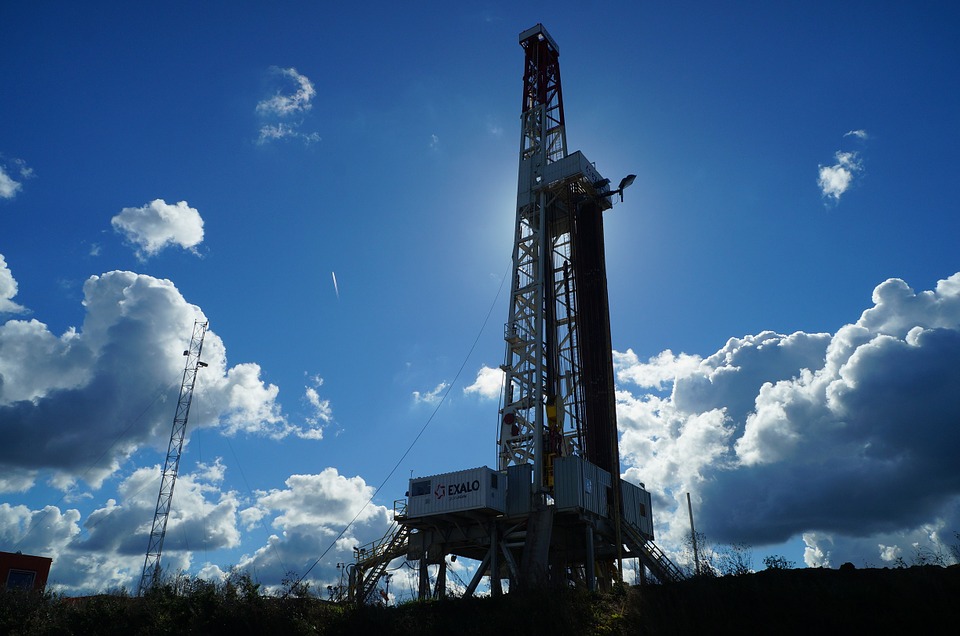US President Barack Obama is going to propose tax on oil at $ 10 per barrel in the budget for 2017. The offer is meant to promote environmentally friendly transport projects, reports Reuters.
Initially, Obama was against the abolition of the export ban. However in December last year, the US Congress Republicans lobbying for lifting the embargo made up with the Democrats, who opposed this initiative. After that, Obama signed the draft budget 2016, with oil exports spelled out there.
America is home for thousands companies-oil producers, which have accumulated huge reserves of oil in recent years. This is result of a so-called shale revolution, during which US producers were able to dramatically increase the production level by extracting oil from shale rock). By the way, the level of production and stocks in the US is one of the main factors affecting oil prices. According to the US Department of Energy, US stocks rose by 7.8 million barrels and amounted to 502.7 million barrels for the week ending January 29.
On the one hand, the new tax will hit the consumer. The fuel would rise in price, which may cause dissatisfaction of Americans. On the other hand, this would be a blow on the oil producers, who are already experiencing serious difficulties because of the low prices.
Many companies in the US operate at a loss or just through grants already now. In late January, Reuters reported that even the leading American companies producing shale oil, such as Continental Resources, Hess Corp and Noble Energy, reduced their costs in the range of 40 to 60%.
However, the president's initiative could have some impact on WTI quotes.
Oil jumps
Oil quotes has been fluctuating greatly in recent months. Nevertheless, the overall level remains near $ 30 per barrel. This also applies to North Sea Brent, and US light WTI.
WTI’s price was above Brent for some time after the United States lifted with more than 40-year-old ban on oil exports abroad. WTI’s quality is better than Brent, it is more "easy" (lower density), but until recently, it served as a benchmark for the US only.
Then, the North Sea oil began to overtake the US price once again. Brent is fluctuating considerably more than WTI. The reduction trend has been primarily set by OPEC’s December decision on excess of existing production (currently about 1 million barrels per day). The union refused to reduce quotas then. The falls was also partly caused by the US oil’s newly allowed access to the world market and the mid-January abolition of the Western sanctions against Iran. Islamic Republic of Iran has long promised production and exports to 0.5 million barrels once the restrictions are lifter, and later bring the volume up to 1 million barrels.
However, the prices were given a boost up by a last week message that the OPEC countries (especially Saudi Arabia) are willing to consider the reduction of production by 5% - with the proviso that all world leaders will reduce oil production. Then the price of a Brent barrel increased by $ 3 to more than $ 36.
Meanwhile, number of drilling rigs fell by the 78 units in January 2016. This is a 4%-reduction if compared with the previous month (1891 pieces), according to the US oil service company Baker Hughes.
In annual terms, the number of units declined by 1418 units, or 43%, said Baker Hughes.
According to the company, the figure was 654 units in the US, what is 60 units, or 8% less than in December 2015. In Latin America, rig count was reduced by 27 units, or 10% compared with December and amounted to 243 pieces.
Number of installations in the Middle East fell by 4%, or by 15 units to 407 units. Europe decreased the number by 6 units (5%) to 108 units. In the Asia-Pacific region, the number of facilities decreased by 5 units, or 3%, and amounted to 208 units.
In Canada, by contrast, the figure for the month increased by 32 units, or 20% to 192 rigs. Furthermore, the number of African rig grew by 3 pieces, or 3.3%, up to 94 units.
Initially, Obama was against the abolition of the export ban. However in December last year, the US Congress Republicans lobbying for lifting the embargo made up with the Democrats, who opposed this initiative. After that, Obama signed the draft budget 2016, with oil exports spelled out there.
America is home for thousands companies-oil producers, which have accumulated huge reserves of oil in recent years. This is result of a so-called shale revolution, during which US producers were able to dramatically increase the production level by extracting oil from shale rock). By the way, the level of production and stocks in the US is one of the main factors affecting oil prices. According to the US Department of Energy, US stocks rose by 7.8 million barrels and amounted to 502.7 million barrels for the week ending January 29.
On the one hand, the new tax will hit the consumer. The fuel would rise in price, which may cause dissatisfaction of Americans. On the other hand, this would be a blow on the oil producers, who are already experiencing serious difficulties because of the low prices.
Many companies in the US operate at a loss or just through grants already now. In late January, Reuters reported that even the leading American companies producing shale oil, such as Continental Resources, Hess Corp and Noble Energy, reduced their costs in the range of 40 to 60%.
However, the president's initiative could have some impact on WTI quotes.
Oil jumps
Oil quotes has been fluctuating greatly in recent months. Nevertheless, the overall level remains near $ 30 per barrel. This also applies to North Sea Brent, and US light WTI.
WTI’s price was above Brent for some time after the United States lifted with more than 40-year-old ban on oil exports abroad. WTI’s quality is better than Brent, it is more "easy" (lower density), but until recently, it served as a benchmark for the US only.
Then, the North Sea oil began to overtake the US price once again. Brent is fluctuating considerably more than WTI. The reduction trend has been primarily set by OPEC’s December decision on excess of existing production (currently about 1 million barrels per day). The union refused to reduce quotas then. The falls was also partly caused by the US oil’s newly allowed access to the world market and the mid-January abolition of the Western sanctions against Iran. Islamic Republic of Iran has long promised production and exports to 0.5 million barrels once the restrictions are lifter, and later bring the volume up to 1 million barrels.
However, the prices were given a boost up by a last week message that the OPEC countries (especially Saudi Arabia) are willing to consider the reduction of production by 5% - with the proviso that all world leaders will reduce oil production. Then the price of a Brent barrel increased by $ 3 to more than $ 36.
Meanwhile, number of drilling rigs fell by the 78 units in January 2016. This is a 4%-reduction if compared with the previous month (1891 pieces), according to the US oil service company Baker Hughes.
In annual terms, the number of units declined by 1418 units, or 43%, said Baker Hughes.
According to the company, the figure was 654 units in the US, what is 60 units, or 8% less than in December 2015. In Latin America, rig count was reduced by 27 units, or 10% compared with December and amounted to 243 pieces.
Number of installations in the Middle East fell by 4%, or by 15 units to 407 units. Europe decreased the number by 6 units (5%) to 108 units. In the Asia-Pacific region, the number of facilities decreased by 5 units, or 3%, and amounted to 208 units.
In Canada, by contrast, the figure for the month increased by 32 units, or 20% to 192 rigs. Furthermore, the number of African rig grew by 3 pieces, or 3.3%, up to 94 units.



















